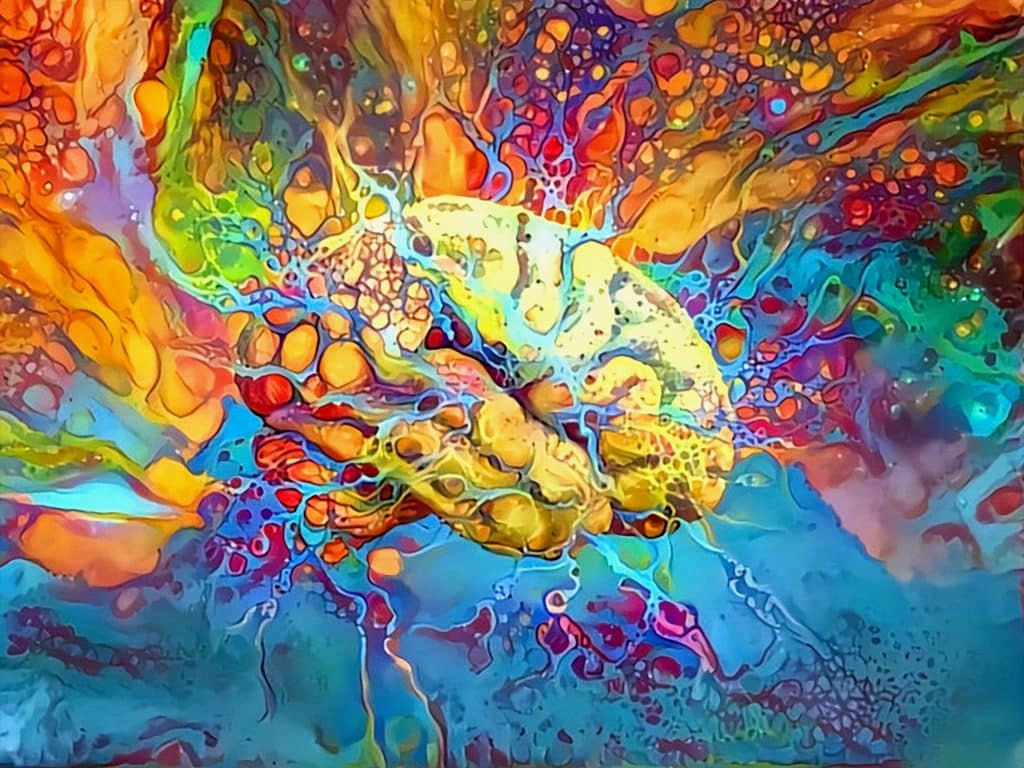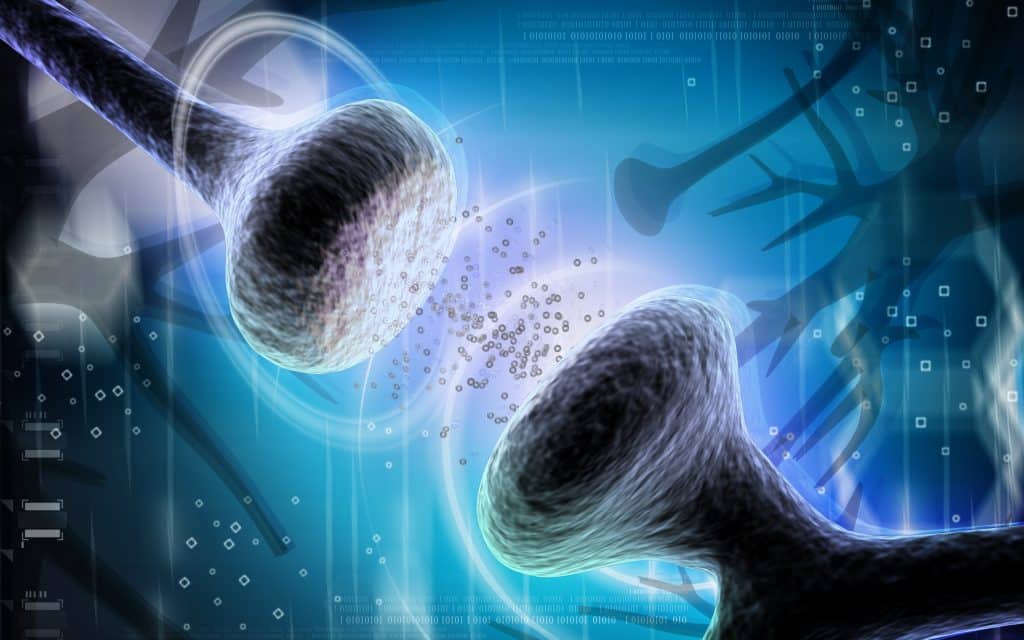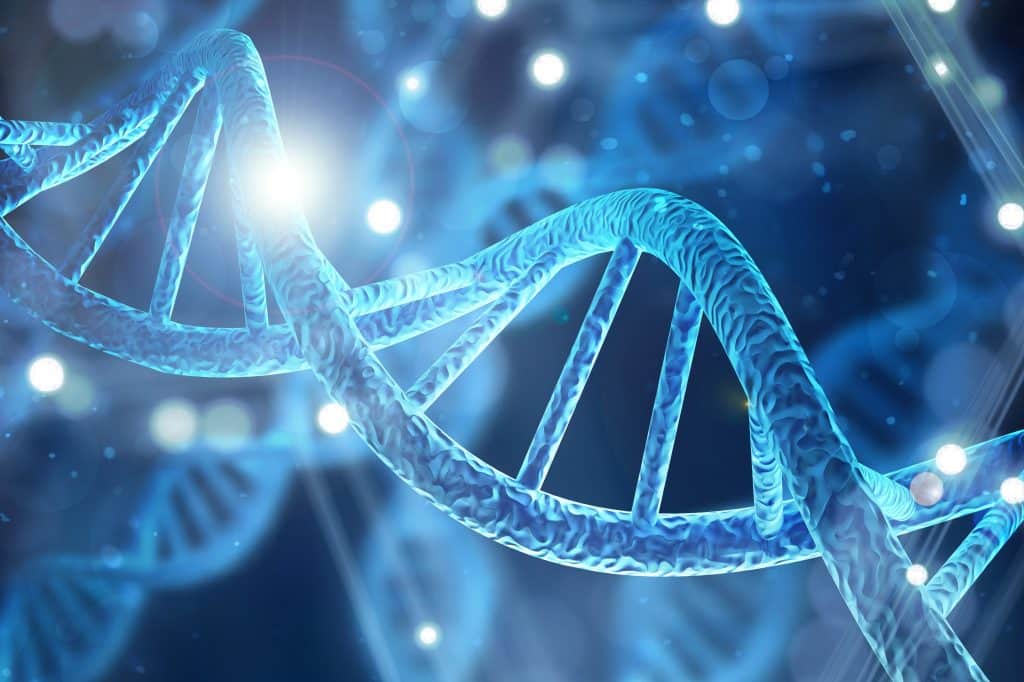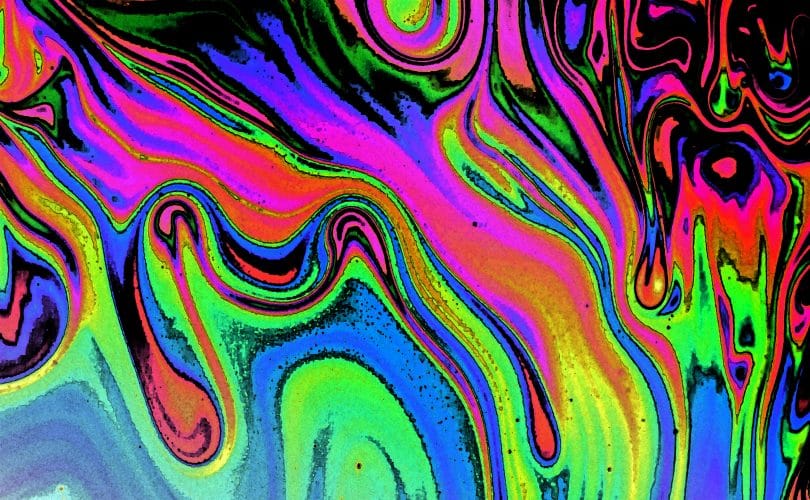Getting high on hallucinogenic drugs, otherwise known as a psychedelic trip, can create some unpredictable feelings ranging from incredible joyous bliss, fear and despair, deep connectivity, or sometimes, it’s simply crazy, confusing, and all over the place. Set and setting, which refers to a range of psychological and environmental preparations a person can make to facilitate a better trip – has become the golden standard for determining the nature of these wild endeavors. However, new research indicates that how a person experiences psychedelic drugs may be influenced by something even deeper: their DNA.
Based on the study, certain DNA sequences and genetic mutations can make an individual predisposed to stronger trips, no trips, or feeling the effects of some psychedelic drugs and not others. Let’s take a closer look.
Your brain on psychedelics
Defined simply, or if you look up the term in an online dictionary, a “trip” can be described as a “temporarily altered state of consciousness”. This is accurate, but really a very basic explanation for something that can be transcendental and life-changing for many people. A “temporarily altered state of consciousness” can technically be achieved through the use of any drug that produces a “high”. Even sleeping puts you in a “temporarily altered state of consciousness”.

That being said, exactly which drugs count as “psychedelic” has been a matter of some debate. Typically, neuroscientists and other experts in the field use the term to describe substances that bind to the serotonin 2A (5-HT2A) receptor; although there are a few other mechanisms through which these drugs can work. The other ways that psychedelic drugs can make us hallucinate is by activation of dopamine D2 receptors (usually happens when using psychostimulants like ecstasy) or by blocking glutamate NDMA receptors (like with dissociative anesthetics).
Authors of a 2014 study titled ‘Pharmacology of Hallucinations: Several Mechanisms for One Single Symptom?‘, explain it as such: “Psychostimulants-induced hallucinations result from increased dopamine transmission and hyperactivation of dopamine D2 receptor (D2R). Furthermore, dissociative anesthetic drugs induce complex schizophrenia-like clinical pictures, including hallucinations, that result from the blockade of glutamate NMDA receptors (NMDAR). Lastly, psychedelics act by stimulating the serotoninergic 5HT2A receptor (5HT2AR)”.
Now that we’ve covered the scientific side of things, let’s take a quick look at the actual psychedelic experience. Psychedelic trips include various types of visual, auditory, and sensory hallucinations. The intensity of a trip can vary dramatically based on several different factors. Sometimes, a user will experience no hallucinations at all, but rather a sense of general well-being, spirituality, and euphoria.
Generally speaking, a few common things that can change the nature of a psychedelic trip include the specific compound and dose consumed, set and setting, state of mind at the time of consumption, overall mental health, how much water you drank or food you ate that day, and so on. Until now, we were mainly looking at external, or “environmental” aspects, but we are now learning that a person’s genes can have a substantial impact on how they experience drugs as well.
Psychedelic experiences and the DNA difference
Serotonin is a neurotransmitter that acts as a hormone and is responsible for regulating numerous different physiological functions including appetite, sleep, mood, and healing. Serotonin receptors, of which there are many subtypes, modulate the release of serotonin in the brain. The serotonin 2A receptors which are stimulated by psychedelic drugs, are also responsible for processes such as learning and memory, as well as neurogenesis.
However, not everyone’s serotonin 2A receptors work the same way, and a major reason why is due to DNA variations and genetic mutations – known as single nucleotide polymorphisms (SNPs). Because these SNPs can have such profound effects on how a person reacts to psychedelic drugs, a team of researchers decided to take a closer look at the impact of hallucinogenic drugs on 2A receptors with seven common mutations.

They published their findings in July 2022, in the journal ACS Chemical Neuroscience. In the study, they detail the observed reaction between seven SNPs and various psychedelics: LSD, mescaline, psilocin/psilocybin, and 5-MeO-DMT (toad venom). The results were clear, the variations in the genes altered how the serotonin receptors interacted with these compounds.
“Significantly, the in vitro pharmacological effects of the SNP drug actions at 5-HT2AR are drug specific,” write the researchers. “Compared to the regular variant of the serotonin 2A receptor, two SNPs – known as Ala230Thr and His452Tyr – displayed a seven-fold decrease in signaling potency when interacting with psilocin. Meanwhile, the Ala447Val variant showed a three-fold increase in potency for 5-MeO-DMT.”
They went on to explain that “Four polymorphic 5-HT2A receptors exhibited statistically significant changes in mescaline potency. Of these, the largest effect was observed for the Ser12Asn 5-HT2A receptor, which displayed a 9-fold increase in potency for mescaline.”
Interestingly, most of the SNPs did not result in any significant changes when it came to overall LSD signaling potency. I was honestly surprised by this because when I tried acid, I didn’t feel a thing but the other people who took it with me were tripping balls. Apparently, a couple of variants did seem to influence the trajectory of a person’s LSD trip, such as Ala230Thr which reacted very intensely during the early stages of a trip, whereas another variant, His452Tyr, was found to minimize the potency and efficiency of LSD more towards the middle point of the trip. But none seemed to result in a person not feeling LSD at all.
Another noteworthy variant known as Asp48Asn produced a weakened response to mescaline (found in peyote, san pedro, etc.), but a more powerful response to psilocybin/psilocin (found in mushrooms and truffles).
To emphasize the importance of their research, study authors mention that “patients and populations with certain polymorphisms may be differentially amenable to psychedelic-assisted treatments.” Simply put, some people are naturally inclined to weaker or stronger trips when taking certain substances, and this is a considerable breakthrough in the way we can use psychedelics medicinally (and recreationally) in the future.
Changing your DNA

We know that environmental factors such as food, drugs, or exposure to toxins can alter your DNA for the worse. We also know that stress and negative experiences can do the same. And we know that these changes can be both permanent, and passed down to children. Generally, studies explore what components can have a negative impact on our genes, but what about changing your DNA in ways that benefit your health and wellness?
Indeed, positive experiences such as exposure to learning and enrichment opportunities, feeling love and joy, and so on, can change our brain chemistry as well. External experiences spark interactions between neurons, which then produce a series of regulatory proteins. These proteins attract or repel DNA-changing enzymes that attach to the gene and can permanently change the coding within said genes.
So yes, things like positive interactions with people you care about, good sleep patterns, exercise, healthy eating, and even meditation can help you repair your DNA and prevent future damage. And repairing your DNA could help you have more powerful and beneficial experiences with psychedelic drugs.
Final thoughts
To summarize, while external factors like set and setting were once thought to be the most important factors in having a successful psychedelic trip (and make no mistake, they are important), we now know that a person’s DNA also makes a huge difference in how drugs will impact them. It’s useful to know in both medical and recreational settings, as it can help consumers figure out what substances and doses work best for them.
Hello readers. We’re happy to have you with us at Cannadelics.com; a news source here to bring you the best in independent reporting for the growing cannabis and hallucinogen fields. Join us frequently to stay on top of everything, and subscribe to our Cannadelics Weekly Newsletter, for updates straight to your email. Check out some awesome promos for cannabis buds, smoking devices and equipment like vapes, edibles, cannabinoid compounds, amanita mushroom products, and a whole bunch more. Let’s all get stoned together!









